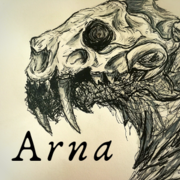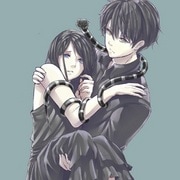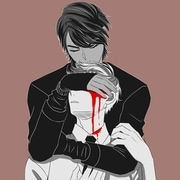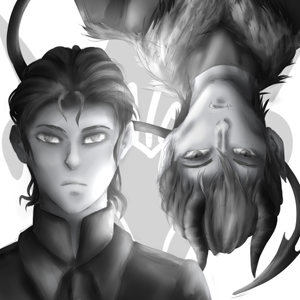So much for a history lesson.
Now let's cover some civil studies, or rather more recent history.
Do bear with me, this one gets more interesting.
One of the names you might come across when there are talks about law enforcement units and equipment is Aida. Or "Lady Aida". Which is misleading, because both refer not to different people, but different things.
"Aida" has become somewhat of a bastardization of the acronym ADA, which stands for "Anti-Demon Arsenal", the umbrella term for all equipment specially developed and designed to counter demons and their magic, both in an offensive or defensive way.
Police force were aware that referring to it by a woman's name may cause some...awkward turns of phrase, like "making sure Aida is fully stocked", or "taking Aida along for the ride", but it quickly stuck among the forces as an inside jokes that even female officers were eventually on board with, as long as no one tried to purposefully make it awkward, or raunchy. We all know that one person that's gonna try with all their might to be worse.
But the ADA as it stands now is a far cry from what us humans had to contend with when all we had were bullets. Even in their weakened state, some exiled demons had skin tough enough to stop most bullets, a higher pain threshold left them harder to incapacitate, they would heal much faster than any human would from bullet wounds, and they seemed to be immune to earthly infections.
Shocking, I know.
Loyd Rosso, or Captain Rosso, is a name that has become a legend in proving what seemed to be impossible at first. He was the first to kill an exiled demon while using only the weapons we had in our disposal. It was described as "shooting down a tank with an assault rifle", and required a lot of ammunition, but eventually it keeled down and never came back up. This renewed the humans' confidence in their ability to fight back and not just hold off the exiled beings that decided to take their anger out on them.
When interviewed near the end of his life, Loyd's recounting of his life, before the fallout, surprised many. He was no military man, not even neighborhood watch, and his only firearm experience was licensed, recreational hunting. Him becoming an authority figure in the fight against demons before ADA was implemented was – much to people's disdain – born of his love of action and post-apocalypse movies.
It's true that you should never base your survival and leadership plans on movies, but it turns out that if you take inspiration from the right ones, it just might work.
With ammunition still being limited, everyone knew that they couldn't keep dumping lead on every threat that lunges at them, and Loyd once again stepped up to the plate. Through trial-and-error under (sometimes literal) fire, along with a team of people who did have proper experience in armed forces, Loyd came up with a plan to target different areas in the demons' bodies, like analyzing an enemy's hit boxes in a video game, trying to find their weak spots, seeing as they resembled humans much more than anything truly unearthly.
It took a whole lot more bullets, but eventually they found the vulnerable spots that might not have been a one-shot-one-kill with the tools of that time, but with enough precise shots they could significantly cut down on ammo use, coining what later became known as the "Rosso Chart", which depicted these spots in an easy-to-memorize diagram, passed down through all organized defense units until becoming part of standard law enforcement training.
That was his trailblazing contribution to the fight against demons, paving the road to the creation of ADA.
How ADA came to be has more to do with Lady Aida, which confuses many, because there is no such person in recorded history, in regards to the development of countermeasures against demons. Lady Aida isn't the "woman's version" of anti-demon weapons, but a way in which another very important woman is referred to – Stella Roberts.
Stella was a doctor, and when we started gunning down demons to death, she held off the handling of the bodies until hazmat suits could be acquired, claiming they don't know if their biology might be toxic to humans. Not yet knowing how to properly dispose of the bodies, they were simply moved as far away from the human settlements as possible to avoid contamination.
As time passed, Stella was the first to notice that other exiled demons seemed to have stayed away from the bodies. She also noticed it wasn't just the bodies themselves, thinking at first it was the smell of decay or reverence towards their dead, but they appeared to be repelled even by traces of old blood.
Following the pioneering spirit of Captain Rosso, Stella gathered her own research team to join field units, approaching the scene like it was a radioactive site and collecting tissue and blood samples, using what tools and tests that were in their disposal, and comparing their findings to the aged, completely dead tissues.
While not knowing exactly what they were looking at, at the time, Stella's team did find that it was as though the tissues' composition changed drastically once they were completely non-viable. Combined with the observation of the repelling effect the dead bodies had, they theorized that it's off-putting to demons because it's potentially harmful to them.
This led to an era of experiments of anti-demon measures – experimentation that eventually bred laws on how to use and test them – to try and figure out how to effectively deter demons or get past their high endurance and fast healing. Taking notes from ancient biological warfare, Stella and her team created a bio-ware grenade meant to spray what they assumed to be poisonous blood to affect multiple targets. Several attempts have confirmed that aged demon blood indeed had affected other demons, more like toxic fumes than direct damage.
However, they also found that prolonged exposure – either in the gathering and research stage or when it bursts – ended up being harmful to humans as well, even after multiple attempts to synthesize an artificial, safer version, that'll be just as potent.
Seeing that they had to come up with something that'll be safer to use and would guarantee as little collateral and unintended damage to the surroundings, they decided to take advantage of what they currently have to keep demons at bay and bide their time to find alternative methods of fighting back.
Perhaps a darker chapter in our attempt to survive and thrive in the face of a supernatural adversary that was completely alien to us, Stella's research expanded even further, now having specialized retrieval teams that would collect the bodies of demons, as they learned to understand their biology and experiment on what weaponized methods would work best without risking field units by sending them off with weapons of unknown effectiveness against demons.
While holy water didn't work, being the very first thing attempted against the hellish enemies, her research unveiled other sources that proved to have warding effects on demons, or preventing them from healing as fast, making them as vulnerable to damage as humans are to weapons of their own making. Things like certain herbs and metal alloys that could be found and forged either as tools or as coating, as well as sigils to allow the field units more protection from close-up damage.
And that was how the ADA came to be, as the available options for the humans to use expanded to anything between specialized firearms and ammunition, to close-range blades and gloves, and all the way to protective wear. Unfortunately, Stella didn't live long enough to see her work become the golden standard in civil protection, due to her long-time work with the toxic demon blood, but has remained a pillar of innovation and protection in the eyes of many in her field, much like Loyd Rosso, although at that time some critics of their methods have already emerged – in smaller number than these days – dubbing the process unethical and, perhaps ironically, inhumane.
In her later years, while still lucid enough for interviews, Stella admitted that while they never experimented on demons while conscious in any form, she had her gripes with the methods as well. Still, while she admitted to feeling remorse, she claimed to have never regretted her choices, seeing enough of the developed arsenal to know she had paved a safer and more controlled way to ensure humans are protected against demons, should they keep their outbursts of rampaging destruction.
Her final contribution was establishing the basis of the global code of conduct for anti-demon units, a respected legacy that received the uninspired title of "Stella's Law of Conduct", although some have also referred to it as "The Stellar Guardian", feeling that she's always watching them to make sure her contribution to our survival doesn't turn us into ruthless killers out to destroy all demon-kind.
Creatures that many of us have forgotten are, ultimately, prisoners condemned for exile from their home
And now, with the playing field leveled and demons acknowledging our authority over the land, things have mellowed down. Knowing that they couldn't just get away with rampaging about, the demons have relented to live in peace under our conditions.
Even with many still upset, or even left feeling humiliated to have their rules dictated by humans, who they used to feel superior to, there was a growing population of demons, especially the new generations of them, that have come to accept the new reality and did their best to live in peace, finding more benefit in adhering to human laws than fighting against them.
Now that this history lesson is over, it's time to see how the modern anti-demon units operate, and meet the human that might shift the way they see their work for generations to come.











Comments (3)
See all